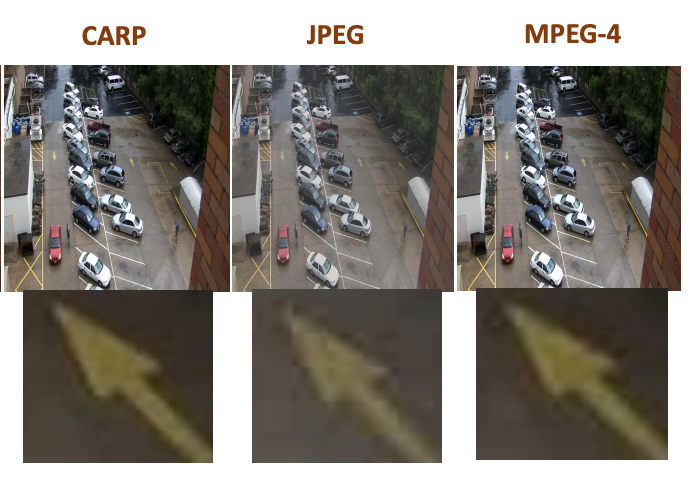
CARP: A new image and video compression method using wavelets with adaptive partitioning
Value Proposition
The sharing and storage of multimedia content is experiencing unprecedented growth; for example, video content traffic is expected to triple by 2021. Furthermore, advanced scientific imaging techniques such as cryo-electron microscopy (cryoEM) and magnetic resonance imaging (MRI) require individual labs to save as much as 10TB of raw imaging data each day. However, the essence of conventional image and video compression algorithms has not changed substantially over the last two decades. Although these techniques have been very well engineered and precisely tuned, they exist in a conventional, hard-coded framework and the result has been diminishing returns with each generation of a new compression standard. On the other hand, machine-learning-based techniques offer an adaptive approach that can meet the needs of growing array of video use cases such as VR streaming, social media sharing and object detection. A compression algorithm in this vein could offer the disruptive change in multimedia content sharing and storage protocols necessary to meet the exponential growth in these areas.
Technology
Duke and Rice inventors have developed a highly versatile machine learning compression algorithm that can be applied to all forms of multimedia data. This technology offers improvement over state-of-the-art compression techniques including JPEG, JPEG2000 and MP4 for a wide range of compression ratios (the factor by which the size of the media file is reduced) by recursively and efficiently partitioning multimedia content of any dimension into a one-dimensional vector. One could imagine applying this technology to a range of fields including more efficient streaming of multimedia content, storing high-resolution imaging data, especially for medical imaging applications, and optimizing the load time of images on webpages. Thus far, the inventors have demonstrated the improved compression offered by their technique for a range of different image and video datasets, leading to as much as a two-fold improvement in image quality.
Advantages
- Uses machine learning to test and find the fastest and most efficient way to compress images and videos, instead of relying on a static, hard-code approach
- Applicable for all forms of multimedia content including images, videos and virtual reality content
- Clearer images and videos over a wide range of compression ratios compared to JPEG, JPEG2000 and MP4